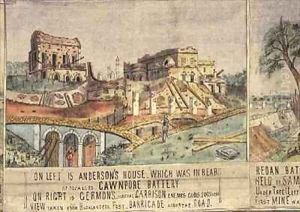Lieutentant Charles Wade Crump Paintings
Lieutenant Charles Wade Crump, although not widely recognized in the mainstream of art history, was an intriguing figure whose contributions to art, particularly in relation to his military career, offer a fascinating glimpse into the world of soldier-artists during and after World War I. Born in 1889, Crump's life unfolded during a period of significant historical events, including the Great War, which deeply influenced his work and perspectives as an artist.
Before the outbreak of World War I, there is little record of Crump's involvement in the arts, suggesting that his artistic journey may have been significantly shaped by his experiences during the war. Like many of his contemporaries, the war's impact was not just physical but profoundly emotional and psychological, influencing his artistic expression. Crump served as a lieutenant, a role that placed him in the midst of some of the most harrowing experiences of the conflict. It is within this context that his art must be understood—a reflection of the tumult and trauma of war, as well as a means of processing his experiences.
After the war, Crump, like many soldier-artists, struggled with the transition back to civilian life. The themes of war, its aftermath, and the struggle for a sense of normalcy in a world forever changed permeated his artworks. His style, characterized by a raw, emotive energy, conveyed the internal and external landscapes of the post-war period. Although specific details about his post-war career and contributions to art are scarce, it is evident that his experiences as a soldier deeply influenced his work.
Crump's death in 1939, on the brink of another world war, marks the end of a life that encapsulated a unique intersection of art and military service. His legacy, though not widely recognized, offers valuable insights into the role of art in processing and documenting the human experience of war. Through his work, Lieutenant Charles Wade Crump provides a poignant narrative on the capacity of art to capture the complexities of life, war, and the quest for peace and understanding in tumultuous times.

